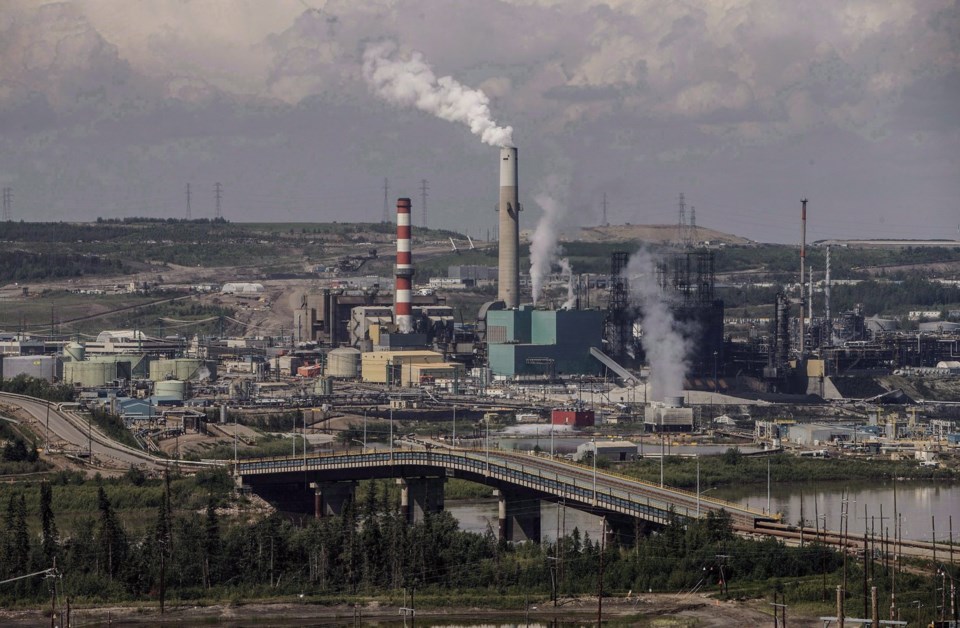CALGARY — Oilsands output is forecast to hit a new record this year and add another half a million barrels a day from last year's levels by 2030 despite global crude price uncertainty, S&P Global Commodity Insights says in a new report.
Production is expected to hit 3.5 million barrels per day this year and exceed 3.9 million barrels a day in five years, S&P said Tuesday.
That would mark a three per cent increase from S&P's previous 10-year outlook for the sector and would be the fourth upward revision in a row.
Output is expected to plateau later this decade and settle around 3.7 million barrels a day in 2035 — 100,000 barrels a day higher than S&P's earlier outlook.
“The increased trajectory for Canadian oilsands production growth amidst a period of oil price volatility reflects producers’ continued emphasis on optimization — and the favourable economics that underpin such operations,” chief Canadian oil analyst Kevin Birn said in a news release Tuesday.
Gone are the days of multibillion-dollar oilsands developments built from scratch. Birn said the growth is coming from making the most of existing operations by removing bottlenecks, decreasing downtime and increasing throughput.
Global crude prices surged well above US$70 a barrel almost two weeks ago, when the Israel-Iran conflict began, stoking supply fears.
But on Tuesday, the August contract lost more than six per cent to settle at US$64.37 a barrel as U.S. President Donald Trump announced a ceasefire, though it was uncertain whether the fighting would indeed stop.
Oilsands companies can handily withstand that lower price, S&P suggested, predicting an average break-even price of US$27 a barrel. That number is substantially lower than it was a decade ago.
“Many companies are likely to proceed with optimizations even in more challenging price environments because they often contribute to efficiency gains,” said Celina Hwang, S&P's director of crude oil markets.
"This dynamic adds to the resiliency of oilsands production and its ability to grow through periods of price volatility."
Hwang added the outlook could be dampened by export pipeline constraints.
The expanded Trans Mountain pipeline to the Vancouver area started up last year, and is the only meaningful way Canadian crude can flow to markets outside the United States.
Though there has been a push for more such projects to be built, no private-sector player has pitched a plan.
"While a lower price path in 2025 and the potential for pipeline export constraints are downside risks to this outlook, the oilsands have proven able to withstand extreme price volatility in the past,” said Hwang.
"The low break-even costs for existing projects and producers’ ability to manage challenging situations in the past support the resilience of this outlook."
Meanwhile, economists at RBC wrote in a report Tuesday that the recent swings in crude prices are expected to have a neutral effect on Canada's gross domestic product.
Higher oil prices raise the price of gasoline at the pump, cutting into households' purchasing power. But the oil and gas sector, which makes up seven per cent of the Canadian economy, sees a big revenue bump.
"The catch is that the benefits from increased corporate profits and higher natural resource royalties to provincial governments are typically concentrated in oil producing regions, while the cost of higher gasoline prices affect all consumers," wrote assistant chief economist Nathan Janzen and senior economist Claire Fan.
They predicted that if oil prices were to rise to US$75 per barrel and stay there for the remainder of the year, the consumer price index growth would be 0.4 per cent higher at the end of 2025 than RBC's current 1.9 per cent growth forecast.
"It’s meaningful, but within the range of what is considered normal volatility in consumer prices."
The Bank of Canada is unlikely to act on the recent crude price moves, and companies' spending plans probably won't change either, Janzen and Fan said.
"Any spikes in prices due to geopolitical instability will not be seen as durable enough to warrant the kind of large capital-intensive investments that have mostly been dormant over the last decade in the Canadian oilsands."
This report by The Canadian Press was first published June 24, 2025.
Lauren Krugel, The Canadian Press



